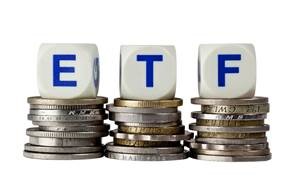It’s no secret that the fund management industry has been subject to scrutiny around how transparent it is - with this focus amplified by rule changes surrounding charges brought on by the Financial Conduct Authority. This has, however, had the beneficial effect of increasing industry best practises – but more needs to be done to ensure that the end-investor is sufficiently informed.

Historically, ETFs have been one particularly cloudy area of the investment market, with industry experts pointing to ETFs as daunting and ‘exotic’ for investors to fully understand.
But despite this, they remain a popular choice for those who are averse to paying the costly annual management charge (AMC) associated with an active manager. In fact, a recent report by Lyxor found that assets under management (AUM) in the European ETF market are up 20 per cent since 2014.
But with this surge in popularity – are advisers aware of the hidden costs that come with trading an ETF? And on what basis do they recommend an ETF to their clients?
Charges
There are charges that investors should expect before buying an ETF, such as management expense ratio (MER), which covers the fixed cost of managing the fund, and the operating expenses, such as costs associated with compliance.
But less identifiable costs, which are generally collected when trading an ETF, must also be explicitly stated in order to fully inform an investor. These include brokerage commissions, premiums to the net asset value (NAV), and bid/ask spreads.
Brokerage commission is, as the name implies, the commission taken by a stock broker when they trade ETFs on the stock exchange. This charge can be significant and should be considered when calculating the cost of investing in an ETF. Brokers are legally obliged to disclose their commission fees, so it is important that advisers recommend shopping around for the best value broker.
When the fund is trading at a premium to NAV, it means that it is trading at a higher price than the NAV of the fund’s underlying securities. In these cases the difference in price can be substantial, especially in times of high market volatility when prices are likely to be high.
A fund’s bid/ask spread is the difference between what other investors are willing to pay (bid) and accept (ask) for a given transaction. For the largest, most actively traded ETFs these spreads can be quite narrow (often just pennies), but for ETFs with lower assets that are traded less often, the spread may be much wider.
Recommending an ETF based on price
While the cost of some ETFs remains a strong lure for some buyers, investors should be reminded that they ultimately choose to invest in an ETF to track an index.
Therefore, the accuracy with which a fund mimics its index is a crucial consideration when assessing its performance. Opting to go for the cheaper product may ultimately be a false economy especially if the ETF fails to do what it is supposed to.
Instead, the best way to gauge the suitability of an ETF is by looking at cost but also with an emphasis on tracking difference and tracking error.
Tracking error refers to the annualised standard deviation of daily return differences between the fund and the total return of its underlying index. But one limit of tracking error is that it doesn’t capture the magnitude of underperformance or outperformance of an ETF.
This is where tracking difference is useful. Tracking difference is the annualised difference between a fund’s return and its benchmark’s return.
So how do you judge a good ETF?
FE Trustnet’s Tahmina Mannan says: “Investors need to bear in mind that the cheapest ETF does not necessarily represent good value. If an ETF has massive tracking difference, or even notable tracking error, then the passive vehicle is not doing what it’s meant to do – which is track an index. Investors should ask questions and look at more than just cost and past performance to get the most out of these investment options.”
One useful way of measuring the performance of an ETF can be by using an independent rating. FE Trustnet’s recently launched FE Passive Crown Ratings help you navigate the murky world of passives, rating them by tracking error, tracking difference and fund size.
